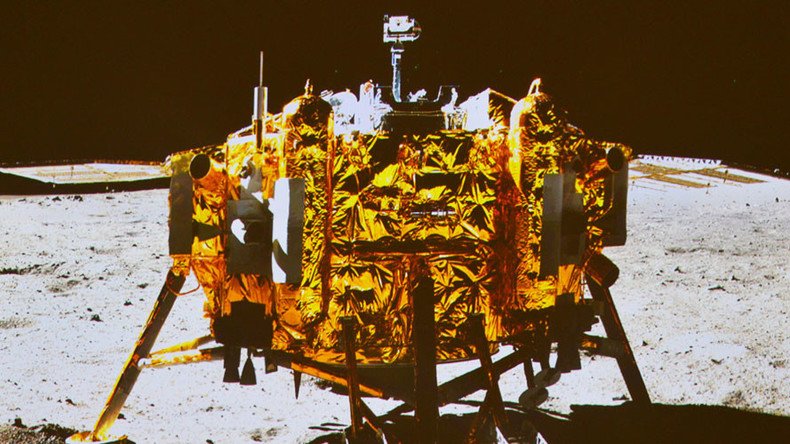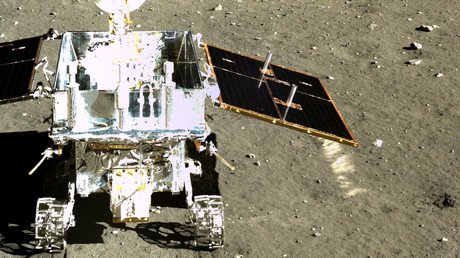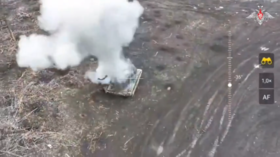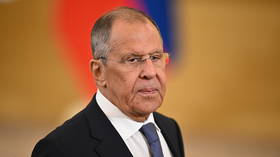China reveals moon mission landing site in quest to retrieve 1st soil samples since 1976

Chinese space officials have revealed details about the country’s ambitious lunar mission, which would be the first to return soil samples to Earth since the Soviet Luna 24 expedition in 1976. Beijing is also planning to have a fully-functioning space station by 2022.
The China National Space Administration (CNSA) has chosen the Mons Rumker region of the moon as the landing site for the upcoming Chang'e 5 mission, Liu Jizhong, director of the Chinese agency’s lunar exploration program, told an international conference.
The site, which was named in honor of German astronomer Karl Rumker, is a volcanic formation in the northwest part of the visible side of the satellite.
The Luna 24 mission retrieved 170g of soil from the moon. The Chinese probe aims to collect about 2kg of soil and rock samples, drilling as deep as 2 meters under the surface. The mission will be launched by a Chang Zheng 5 rocket in late November, according to CNSA plans.
Liu was speaking at the Global Space Exploration Conference (GLEX) 2017, which opened in Beijing on Tuesday, Xinhua news agency reported. The Chinese official also said the CNSA partnered with four nations to develop the scientific payload for the Chang'e 4 lunar probe.
Despite the smaller number in its designation, it is scheduled to be launched later than Chang'e 5, sometime in 2018. The mission was originally planned for 2015, but was repurposed to land on the far side of the moon instead. China plans to place a relay station at the Earth-moon Lagrange Point 2, a spot of gravitational stability, to serve the mission.
Just a few planned lunar missions to whet your appetite for lunar exploration! #GLEX2017pic.twitter.com/uOopLucq9w
— Kate AG (@SpaceKate) June 7, 2017
According to Liu, the Chang'e 4 payload includes 11 instruments. CNSA vice-administrator Wu Yanhua, who is also among the hosts of GLEX 2017, thanked the Netherlands, Germany, Sweden, Saudi Arabia, and the European Space Agency (ESA) for their contribution to the mission.
“We support more international cooperation in China's future lunar and Mars missions, as well as exploration to the Jupiter system and asteroids that are still under discussion,” Wu said.
Yesterday I saw my old friend Yang Liwei (First Chinese astronaut) and he introduced me to a new taikonaut at #GLEX2017 in Beijing pic.twitter.com/6Yv33O015j
— Buzz Aldrin (@TheRealBuzz) June 7, 2017
The Chinese space program, which for years was aimed at ensuring Beijing’s capability to conduct missions on its own, is gradually opening to international cooperation.
“China is expanding cooperation with the United Nations (UN) in space exploration, and will disclose projects later this year," said Yang Liwei, China's first space explorer, who now serves as deputy director of the China Manned Space Engineering Office.
Chinese space station an alternative to ISS?
Future joint projects between China and the UN’s Office of Outer Space Affairs may include cosmonaut training and scientific research on China’s future permanent space station, he added.
Beijing plans to launch the core module of the future station with a Long March 5 rocket in 2019 and have an operational space outpost by 2022, two years ahead of the possible retirement of the International Space Station.
Apollo astronaut and @ISUnet Chancellor Dr Buzz Aldrin gives @iafastro#GLEX2017 keynote on Cycling Pathways to Mars. pic.twitter.com/WniAoSsqFE
— Prof. Chris Welch (@ProfChrisWelch) June 7, 2017
When it is operational, the Chinese large modular space station will have a living module capable of supporting a crew of three for 40 days, and will contain two laboratory modules. The Shenzhou spacecraft will provide crew rotations while robotic Tianzhou space freighters will be used for resupply.
The Chinese station may become an alternative for joint space exploration, Xu Yansong, the CNSA’s International Cooperation Department director, told RIA Novosti on the sidelines of the conference.
“We have no certainty about the ISS, but we will have our own space station in orbit, and it will be opened for the international community,” he said.













